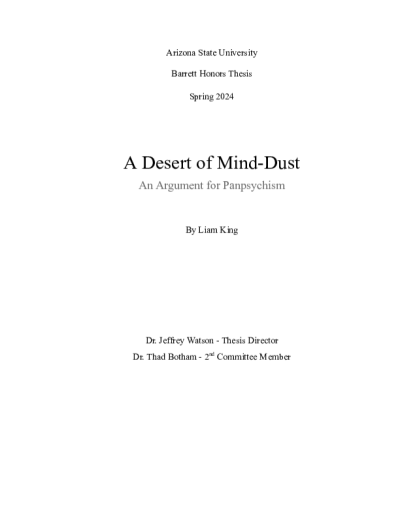Filtering by
This thesis addresses the widespread questions asked of Bitcoin. Cryptocurrencies - decentralized ledgers of peer to peer transactions – have taken the world by storm, with Bitcoin leading the way by means of being the original, most valuable, and most popular. Despite this widespread use, skepticism remains as to what Bitcoin is and whether it counts as money. I first defend the framework that I use for understanding Social Objects, Searle’s X counts as Y in C formula, as money is undoubtedly a social object. I then argue that Smit et al.’s account of money, while useful, mistakenly identifies an essential characteristic of money, the relative ratio scale, as a feature. I therefore present an alternative account of money. I then explain why the most commonly held account of Bitcoin, the chain Definition fails, and why Bitcoin being a fictional substance is not a problem for Bitcoin being money. I then demonstrate Bitcoin’s compatibility with my alternative account, and from this conclude that Bitcoin is Money.

This thesis proposes an extension of David Lewis's causal influence account of causation, providing a method to calculate the `degrees of causal influence.' By providing a quantitative approach to causal influence, I find that that the influence approach can assess statements that involve causal redundancies, allowing the assessor to attribute primary causal responsibility to the contending cause with a higher net influence value. The causal influence calculation also addresses criticisms towards Lewis's influence account, namely those involving `inert zones' of influence, the use of the term `might,' trumping versus symmetric overdetermination, and Lewis's clause requiring stepwise influence. This thesis also compares the results of causal influence in multiple toy cases including Two Rocks, both the asymmetric and symmetric variants, demonstrating that causal influence overcomes many of the core issues in Lewis's initial counterfactual account of causation. Using the asymmetric Two Rocks variant, this thesis also provides a detailed example of how to use the calculation and a discussion of the calculation's limitations. The main drawbacks of the quantitative method for causal influence seems to be the effort that it requires and issues in finding measurable qualities to compare the similarity/difference between possible worlds. Using the Two Rocks case, however, the causal influence calculation reaches the same conclusions as what Lewis suggests. A primary remaining issue is applying the calculation to instances of causation by omission, however this seems to only be a problem in using the equations rather than a problem within the idea of causal influence itself. Also, there may still be issues in justifying comparative overall similarity. However, this is an issue that both the counterfactual and influence accounts face.

Four-dimensionalism is a popular philosophical view of how we persist through time. However, some philosophers, such as Mark Johnston and Eric Olson, argue that four-dimensionalism has perverse implications on our practical ethics. This is because, if four-dimensionalism is true, then there exist entities called personites. And if personites exist, then many of the ordinary prudential, social, and moral habits we engage in, like present self-sacrifice for future benefit, promising to do something painful in the future, or being held responsible for something the we did in the past, subjects personites to suffering without sufficient compensation, consent, or desert. And this would be immoral according to our common-sense morality. In this paper, I argue that if four-dimensionalism is true, and personites exist, then we are still morally permitted to engage in the above practices. If four-dimensionalism turns out to be true, it has no perverse implications on how we ought to live.

Panpsychism is the view that consciousness is an intrinsic state of the world. While early forms were advanced by Spinoza and Russell, only recently has panpsychism gained widespread academic consideration. In this paper, I will argue for panpsychism, based on a similarity of the nature of our consciousness with the nature of the parts of our consciousness. This argument will be motivated by an anti-strong emergentist viewpoint, while allowing for complex consciousness to arise from a form of weak emergence between fundamental parts. Ultimately, this argument demonstrates that an identity theorist would collapse to panpsychism or strong emergentism, the former being preferred. From this, I argue that panpsychists can gain some intuitive benefits of dualism and materialism, without inheriting their issues. This positions the panpsychist well to respond to issues like Jackson’s (1982) Mary-argument. I will then discuss possible objections to panpsychism, focusing primarily on the combination problem. I conclude that the co-consciousness strategy is the optimal solution to this problem and can account for the inverse issue of the decombination problem that cosmopsychism faces. Overall, panpsychism’s explanatory power and compatibility with other disciplines makes it a favorable theory within the philosophy of mind.